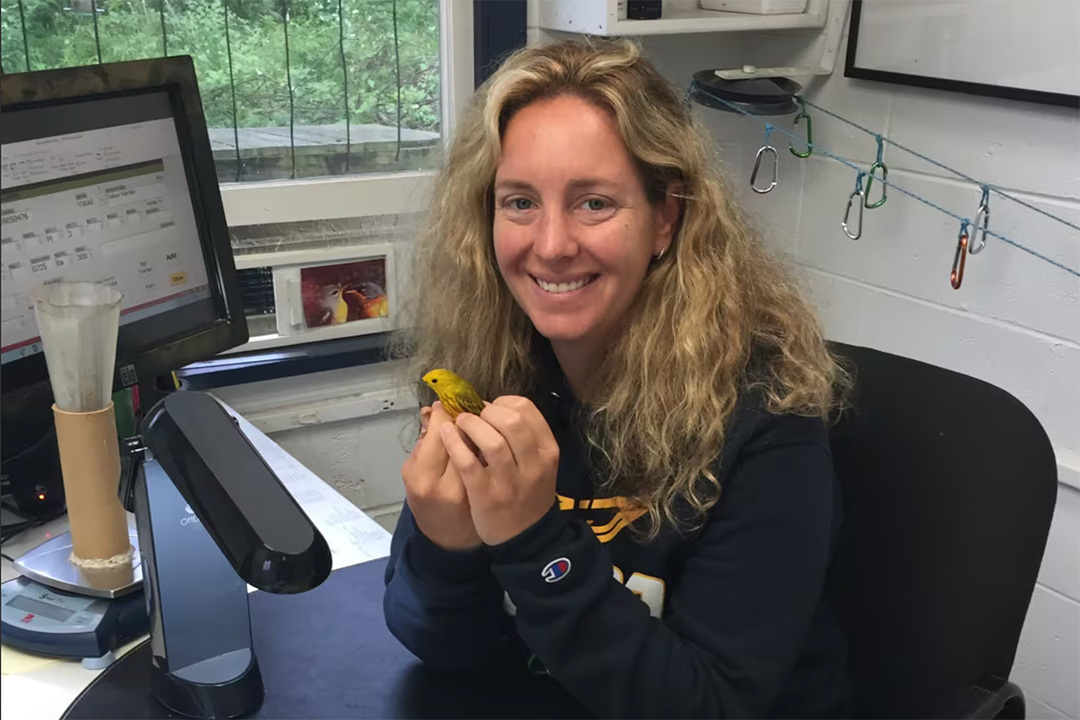
Moriarty Science Seminar: Using Bird Banding Datasets to Track Trends in Bird Populations
March 17, 12:00 pm - 1:00 pm
Hybrid: Online and At the Museum
Event Navigation

Sixty Years and Counting: Using Bird Banding Datasets to Track Trends in Bird Populations
Monday, March 17, 2025, 12:00 – 1:00 p.m.
Earth Theater and online via Zoom
Featuring Annie Lindsay, Powdermill Avian Research Center (Carnegie Museum of Natural History)
This lecture is free. Museum admission is not required.
Learn about scientific discoveries directly from the experts in the field. Carnegie Museum of Natural History’s scientific research staff and invited speakers discuss their latest findings on numerous scientific topics at the R.W. Moriarty Science Seminar series.
Click here to register to attend virtually via Zoom. Registration is not necessary to attend in person. Museum admission is not included with the lecture. Visitor Services staff can direct you to Earth Theater on arrival.
Abstract
The potential for long-term bird banding datasets to contribute to scientific literature is immense, and researchers are using these datasets to
study trends over time (e.g., populations, phenology, behavior, migration, distributions, morphology). Many studies rely on data collected at a single location or over a short period, and while it is valuable to analyze a single large dataset, the conclusions may not be broadly applicable to different geographic and temporal ranges, or to different species or even different populations of the focal species. Comparing multiple long-term datasets comprised of many species from multiple locations is proving to be valuable in identifying and describing patterns in space and time, and among populations and species. Several multi-station analyses have been published that show trends and patterns single-datasets may overlook.
Powdermill Avian Research Center has operated the longest continuously-run, year-round bird banding program in the country, gathering over 830,000 banding records and facilitating countless avian research projects since its inception in 1961. Similarly, Black Swamp Bird Observatory in northwest Ohio has been operating a banding station during the spring and fall migration periods since 1992, amassing over 350,000 records. In this presentation, she compares long-term trends in refueling rate and arrival condition, and changes in wing morphology at both stations, and discusses the importance of collaborations among bird banding operations in strengthening analyses to recognize patterns spatially and temporally.
About Annie Lindsay
Annie Lindsay, PhD, is the Bird Banding Program Manager at Powdermill Nature Reserve, environmental field station of the Carnegie Museum of Natural History, where she runs the long-term bird banding station, conducts avian research, and teaches bird banding classes and workshops. Her research interests lie primarily in songbird migratory behavior and ecology, seasonal interactions and carry-over effects, and molt strategies and timing. She is particularly interested in how human activities affect bird populations and how those populations have changed over time in response to environmental changes. Annie earned a BS in Biology, an MS in Environment and Natural Resources from the Ohio State University, and a PhD in Biology from the University of Toledo. She has traveled around the country and internationally to band birds and study avian ecology and behavior. She is a North American Banding Council certified Bander and Trainer and serves in leadership roles for the Eastern Bird Banding Association, North American Banding Council, Pennsylvania Society for Ornithology, and Black Swamp Bird Observatory.
